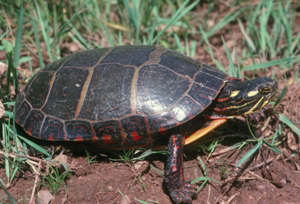In the north, hatchling painted turtles can survive even when their body fluids partially freeze during the winter.
Photo Credit: Geoffrey A. Hammerson
Chrysemys picta
Common Name: painted turtle
Animal Guild: Reptile
Class > Order > Family: Reptilia > Testudines > Emydidae
